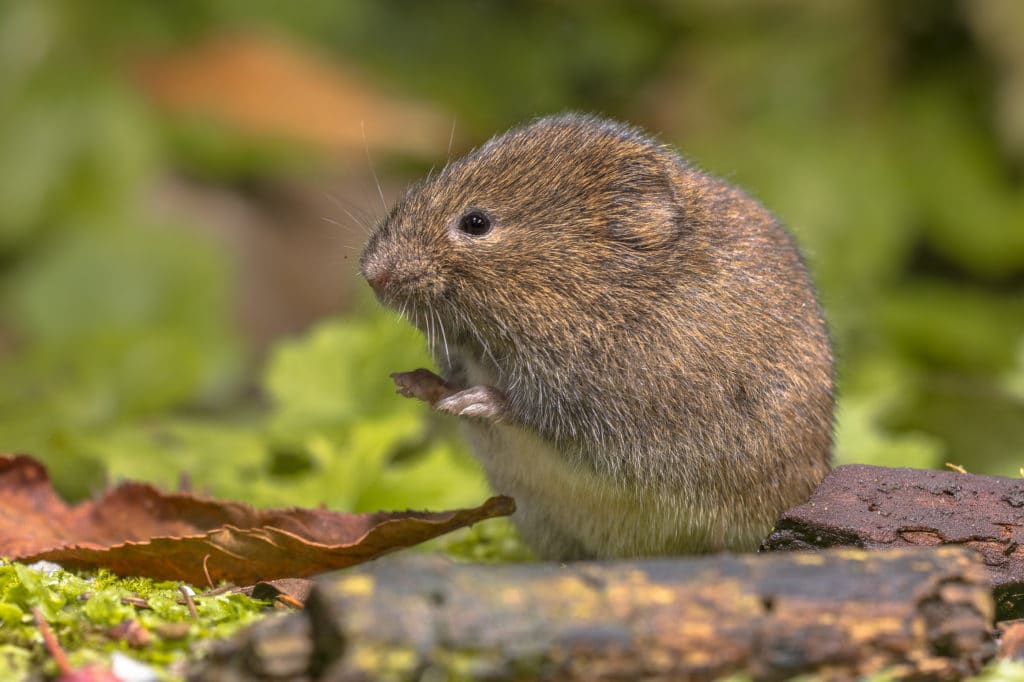Specialist Strategies for Vole Control and Prevention
Specialist Strategies for Vole Control and Prevention
Blog Article
Comprehensive Overview to Effective Vole Pest Control: Invasion Identification and Treatment Approaches
In the world of reliable insect control, vole infestations present a distinct difficulty that requires a tactical method. These little rodents, typically mistaken for computer mice, can damage yards, yards, and crops if left unattended. Identifying the signs of vole presence and implementing targeted therapy techniques are important elements of a successful insect management strategy. By checking out the nuances of vole behavior, recognizing key indicators of problem, and examining a variety of control options, one can develop a thorough approach to deal with these evasive bugs.
Comprehending Vole Habits
Vole actions is defined by their tunneling habits and fast recreation prices, making them a difficult insect to regulate effectively. Their rapid reproductive rate more makes complex control initiatives, with ladies capable of producing numerous clutters in a single year, each containing several spawn.
Voles are most energetic during the morning and evening hours, spending most of their time foraging for food. Their burrowing practices not only disturb gardens and yards however likewise make them challenging to identify and remove. Understanding vole habits is vital for effective parasite control approaches. By determining their burrow places, keeping track of feeding locations, and carrying out targeted control methods, such as capturing or environment adjustment, vole problems can be handled efficiently.
Indicators of Vole Problem

Avoidance Methods
Executing efficient prevention strategies is essential in reducing vole invasions and securing plants from their harmful feeding behaviors (vole control utah). To avoid vole problems, it is necessary to start by eliminating possible food sources and shelter. Keep yard and plant life trimmed short, remove weeds and debris, and keep a neat yard or yard to make the area much less eye-catching to voles. Setting up obstacles such as equipment cloth or below ground fence can likewise help hinder voles from going into specific areas. Additionally, minimizing excess moisture by fixing leaking pipelines and making sure proper water drainage can make the setting less welcoming for voles.
Regularly examining the home for signs of vole activity, such as check that runways and tunnel openings, is essential for early discovery and punctual action. If vole activity is believed, take into consideration utilizing catches or repellents tactically placed near their pathways.
Non-Lethal Control Approaches
To successfully manage vole populaces while focusing have a peek here on gentle techniques, non-lethal control techniques supply functional services for lowering vole damage in yards and landscapes. One effective approach is making use of physical obstacles such as equipment cloth or cord mesh to shield susceptible plants. These obstacles can be hidden a minimum of 12 inches curved and deep at a 90-degree angle to avoid voles from delving underneath. Furthermore, environment modification can deter voles by lowering their preferred food resources and hiding areas. Maintaining a well-mowed lawn, eliminating debris, and maintaining greenery trimmed can make the atmosphere less enticing to voles.

Lethal Control Options
One reliable method for dealing with vole invasions in landscapes and gardens includes the critical use dangerous control choices. When confronted with a serious vole problem that non-lethal approaches have stopped working to include, carrying out dangerous control steps becomes essential. One commonly utilized dangerous control option is the use of breeze catches. These catches are created to rapidly and humanely kill voles upon activation, making them a popular option for many garden enthusiasts and landscaping companies. To boost the effectiveness of breeze More Info catches, it is advised to put them in locations where vole activity is high, such as along runways or near burrow entrances. An additional deadly control alternative is the usage of harmful baits especially formulated to target voles. These baits have poison that is ingested by the voles, leading to their eventual death. However, caution must be worked out when using hazardous baits to prevent harm to non-target animals or pets. On the whole, when using lethal control options, it is vital to do so sensibly and based on regional guidelines to properly take care of vole invasions.
Final Thought
To conclude, reliable vole pest control requires an extensive understanding of vole actions, identification of indications of problem, execution of prevention strategies, and utilization of both lethal and non-lethal control approaches. By combining these techniques, people can efficiently manage vole populaces and safeguard their property from damage. It is essential to attend to vole infestations quickly to avoid further concerns and lessen the influence on the surrounding atmosphere.
Offered the elaborate passage systems and fast recreation prices particular of voles, recognizing the indicators of vole invasion comes to be vital in effective parasite control. One of the main indications of vole presence is the existence of surface paths or trails in grass or snow, normally about 1-2 inches vast, produced as voles take a trip in between their burrows and food sources.To efficiently manage vole populaces while focusing on humane approaches, non-lethal control methods use practical remedies for decreasing vole damage in landscapes and yards.One reliable approach for dealing with vole infestations in yards and landscapes entails the strategic usage of dangerous control choices. vole control utah.In verdict, reliable vole bug control calls for a comprehensive understanding of vole behavior, identification of indications of problem, execution of prevention strategies, and usage of both non-lethal and deadly control methods
Report this page